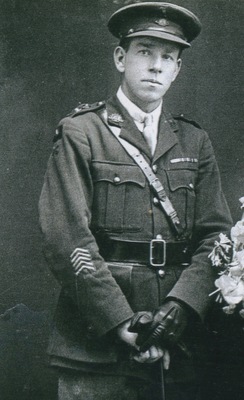A century on from the end of World War I we acknowledge their service …
Lest we forget.
Lieutenant William Cedric Smith
Born: 1888 Geelong. Died: 20 October 1965 Geelong.
Enlisted: 10 June 1915 aged 27.
Served: Egypt, Gallipoli, Western Front.
When he enlisted in June 1915, Bill was a 27 year old engineer. He left Australia on 26 August 1915 and headed to the Dardanelles. With winter approaching, it was cold in the trenches at Gallipoli (there had even been snow fall) and by the time the Australians were evacuated in mid-December, Bill had contracted influenza and was subsequently hospitalised in Alexandria.
After recovering, he was transferred to the 2nd Machine Gun Company and subsequently saw action on the Western Front in France and Belgium. In February 1918, he was recommended for a bravery award following the capture of the strategically important Broodseinde Ridge in October 1917. As the Australians consolidated their positions, Bill’s was subject to a heavy bombardment by the Germans. He was buried as a result of an explosion, but managed to extricate himself. Alone and under heavy enemy fire, Bill freed seven other men who had been buried too. Further, when the opportunity came to be relieved from the Front Line, Bill instead requested to remain, despite what were described as extremely bad conditions. In recommending Bill for an award, his commanding officer wrote: “This NCO has at all times displayed excellent leadership and he always sets a splendid example to the men under him”.
Bill didn’t get a medal, but his leadership qualities were soon recognised in another way: in May 1918, he was selected for training as an officer cadet. He was still in England when the War ended in November 1918. The following month, he was appointed as a Second Lieutenant with the General Infantry Reinforcements. He arrived back in Australia in July 1919. In October, he married Mabel Coe. His commission as an army officer was terminated on 23 December 1919, after four and a half years with the AIF.
After returning, Bill obtained a position with the Victorian Lands Department and initially requested vocational training in cabinet making, but later sought to acquire land under the soldier-settlement scheme. He applied for a soldiers’ settler block at Pakenham South in 1922. In his application, Bill noted that he had eight years’ experience before the War farming in Geelong and the Mallee. He was granted a 60 acre block in Hagelthorn’s Estate off the Kooweerup Road, which he named “Merville”.
There, Bill and Mabel went in for mixed farming (including dairying, vegetables and flax) and raised seven children. In many ways, it was still pioneering days at Pakenham South and Rythdale. Material for Bill and Mabel’s first house had to be brought in by bullock team. There was no power, fridge or ice chest, so drinks and perishables were kept down the well or under the water tank. Not owning a car at first, Bill also had to walk into Pakenham East to shop. Mabel would climb the windmill to see Bill coming home across the paddocks, with sugar bags of groceries on his back. She would then put on Bill’s meal. Their children also remember the snakes. On one occasion, Bill killed 27 black snakes in one day.
Bill and Mabel were also active members of the local community. In 1924, Bill became the inaugural President of the Rythdale sub-branch of the RSL. Mabel served on the Pakenham State School Committee in the late 1930s. In the late 1940s, the Smiths sold “Merville” and moved to a house in Rogers Street, Pakenham East.
This is an extract from Patrick Ferry’s book A Century After The Guns Fell Silent – Remembering the Pakenham District’s WWI Diggers 1914-18.
For more details on this and other profiles in the book, head to the website www.pakenhamww1.com







